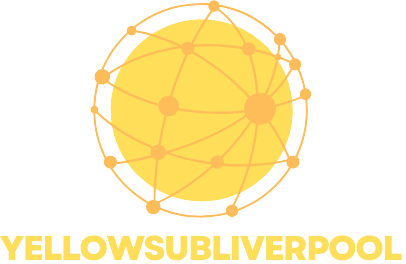Table of Contents
ToggleIn a world where distractions lurk around every corner, mastering time management feels like trying to catch smoke with your bare hands. From endless email chains to that pesky social media scroll, it’s no wonder people are drowning in deadlines. Enter time management tools—the superheroes of productivity ready to rescue anyone from the chaos of their to-do lists.
Overview of Time Management Tools
Time management tools serve as essential assets for individuals aiming to enhance their productivity. These tools range from digital apps to physical planners, each offering unique features to streamline task management.
Task management software provides users with frameworks to organize tasks efficiently. Popular options, like Trello and Asana, enable team collaboration through boards, allowing users to track workflow and deadlines effectively.
Calendar applications help users visualize their time commitments. Google Calendar allows for the integration of events, reminders, and deadlines, contributing to a structured daily schedule. Features like color-coding prioritize tasks based on urgency or type.
Time tracking tools offer insights into how time is allocated across activities. Applications like Toggl simplify tracking hours spent on tasks, revealing patterns that inform better scheduling decisions.
Note-taking applications assist in capturing and organizing ideas efficiently. Apps such as Evernote empower users to jot down thoughts, create lists, or store important information, making retrieval straightforward.
Pomodoro timers enhance focus by incorporating structured work bursts. Using techniques like the Pomodoro Technique, individuals can concentrate on tasks for 25 minutes followed by a 5-minute break, promoting sustained productivity rhythms.
Goal-setting tools help users define and track personal and professional objectives. Structure in goal-setting processes can be found in apps like Goal Buddy, supporting users in staying accountable and motivated.
By adopting a combination of these tools, individuals can create personalized strategies that suit their unique working styles. Each tool’s features contribute to developing efficient habits that support long-term productivity.
Types of Time Management Tools
Time management tools come in various forms, catering to diverse preferences and working styles. These tools help structure time effectively, allowing individuals to enhance productivity.
Digital Tools
Digital tools encompass apps and software designed for efficient task and time management. Applications like Trello and Asana streamline collaboration, enabling teams to organize projects seamlessly. Calendar tools such as Google Calendar help users visualize commitments, making it easier to prioritize tasks. Time tracking apps, including Toggl, offer insights into how time is spent, pinpointing areas for improvement. Note-taking apps like Evernote facilitate capturing and categorizing ideas, ensuring nothing important is overlooked. Pomodoro timers emphasize focused work sessions, breaking tasks into manageable intervals. By utilizing these digital solutions, individuals can tailor their approaches to fit their daily demands.
Analog Tools
Analog tools continue to hold value for many users seeking a tangible approach to time management. Physical planners provide a hands-on method for tracking tasks and events, allowing users to enjoy the satisfaction of crossing completed items off their lists. Wall calendars act as visual reminders, helping to allocate tasks and appointments effectively. Sticky notes remain practical tools for jotting down quick reminders or urgent actions that need attention. Bullet journals combine creativity with organization, offering a flexible framework for logging tasks and reflecting on goals. While digital tools offer convenience, analog tools promote a personal touch, enhancing engagement with daily planning.
Features to Consider
When selecting time management tools, several key features enhance usability and effectiveness. Evaluating these elements helps individuals find the best fit for their productivity needs.
User Interface
An intuitive user interface plays a crucial role in the effectiveness of time management tools. A clean layout allows users to navigate easily, while visual elements like charts and color coding promote quick understanding of tasks and schedules. Many successful apps prioritize user experience by offering customizable views, enabling users to adapt interfaces to their personal preferences. Accessibility also becomes vital; tools that support mobile and desktop synchronization cater to diverse working environments. Ultimately, a well-designed user interface engages users, increasing the likelihood of consistent usage and effective time management.
Integration Capabilities
Integration capabilities significantly influence a tool’s efficiency in time management. Seamless connections with other applications—like email clients, project management platforms, or calendar services—allow users to consolidate their workflow. For instance, compatibility with popular platforms streamlines task updates and notifications, ensuring no critical deadlines get overlooked. Tools that communicate with each other help centralize information, reducing the need to switch between apps. A strong integration setup enhances productivity by creating a unified ecosystem for task management, ultimately facilitating better organization and focus on core activities.
Popular Time Management Tools
Time management tools play a crucial role in boosting productivity. Various options exist, catering to different needs and preferences.
Tool A: Overview and Benefits
Trello is a visual task management tool that organizes projects using boards, lists, and cards. Its collaborative features make it easy for teams to assign tasks and track progress in real-time. Users can also set deadlines and add checklists to ensure accountability within the group. The simple drag-and-drop interface enhances usability, allowing for quick changes to tasks as priorities shift. Overall, Trello is particularly effective for managing complex projects that require teamwork and ongoing adjustments.
Tool B: Overview and Benefits
Asana stands out as a powerful project management solution designed for both individuals and teams. It allows users to create tasks, assign responsibilities, and set deadlines, promoting clarity across projects. Visual timelines and boards can outline workflows, making it easy to spot bottlenecks. Integrations with other productivity tools enhance its functionality by consolidating various tasks in a single platform. The flexibility Asana offers makes it suitable for diverse work styles, ensuring that all team members stay aligned with objectives.
Time management tools play a vital role in navigating the complexities of modern life. By utilizing both digital and analog options, individuals can find the right mix that suits their unique needs. Whether it’s through apps that enhance collaboration or planners that provide a tactile approach, these resources empower users to take charge of their schedules.
The right tools not only streamline task management but also foster a sense of accomplishment. As distractions continue to proliferate, investing time in effective management strategies becomes essential for achieving personal and professional goals. Embracing these tools can lead to lasting improvements in productivity and overall well-being.







